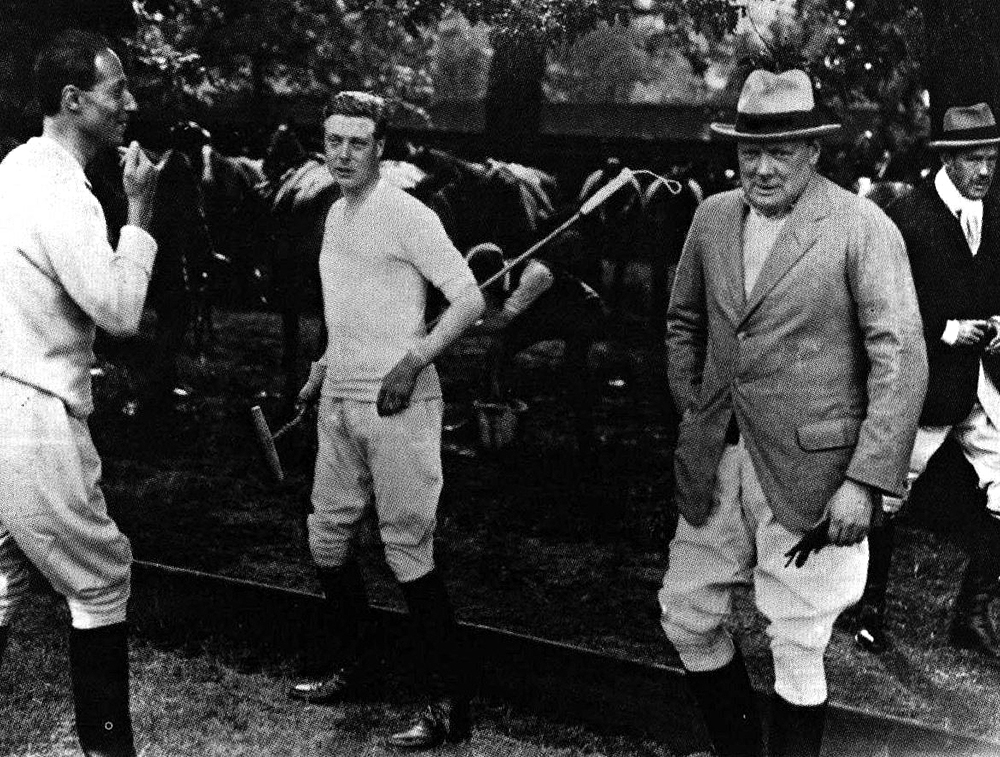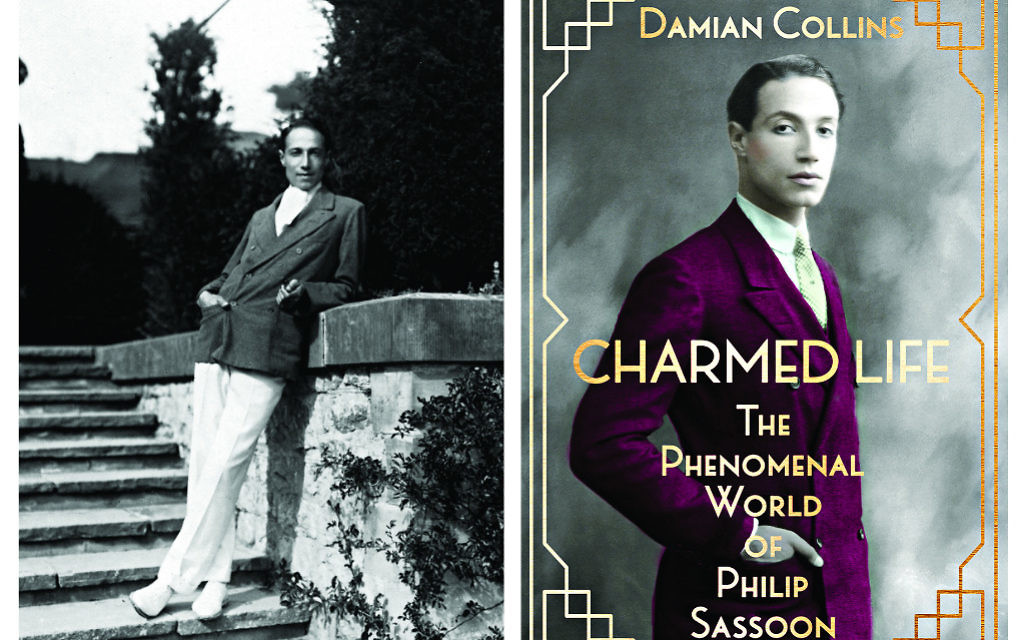Sir Philip Sassoon and the world of privilege
Rebecca Wallersteiner talks to Damian Collins about his new biography of one of England’s most colourful and exotic characters
Charlie Chaplin thought Sir Philip Sassoon “a picturesque personality, handsome and exotic looking.” Although born within three months of each other and with childhood homes less than three miles apart, the chasm between the privilege of Sassoon’s world and the extreme poverty of Chaplin’s early life in East London could not have been greater.
Born into one of the wealthiest Jewish families in late 19th-century Europe, Sassoon became the greatest host of his time, mixing with movers and shakers from arts and politics including Chaplin, then the world’s most famous film actor.
Although rich, Sassoon was also hard-working and generous to charities – but he was also Jewish, clever and probably gay. Almost everyone he met thought him “strange, unknowable and oriental”.
Get The Jewish News Daily Edition by email and never miss our top stories Free Sign Up
Damian Collins’ biography is the first to focus on Sassoon’s productive life and attempt to unravel the enigma of his complex personality.
Collins, Conservative MP for Folkestone and Hythe, says he was drawn to writing about Sassoon because of certain similarities in their lives.
“Sassoon and I both read modern history at Oxford and he was MP for Folkestone and Hythe from 1912 until his death in 1939, the seat I hold 100 years later. So it is fitting that I have written the first biography focusing exclusively on his extraordinary life,” Collins tells me.
Born in Kent in 1888, Sassoon was the only son of Sir Edward Sassoon, the second baronet, and his wife Aline de Rothschild, a marriage that brought together the wealthy Rothschild and Sassoon families.
The family fortune was made originally in the souks of Baghdad, where the Sassoons were Jewish traders specialising in silks, carpets, cotton, spices, pearls and opium. They later moved to Bombay, before settling in England.

“As the heir to a fabulously wealthy family, Sassoon was educated at Eton and Oxford and craved acceptance from the English establishment, many of whom thought him both foreign and exotic,” Collins says.
But Sassoon was not just a wealthy socialite. During the First World War, he enlisted and was sent to France, where he worked as private secretary to General Haig, commander-in-chief of the British forces in France and Flanders.
His fluent French made him invaluable. Sassoon spent much of the war working at Haig’s headquarters in Paris liaising with French military command and dealing with the press.
He did not meet his cousin, the poet and artist Siegfried Sassoon, until after the war ended. Although he also lost a number of his friends in the fighting, Sassoon seems to have had little sympathy with his cousin’s decision to protest publicly against the carnage.
In the 1920s, Sassoon became parliamentary private secretary to Prime Minister David Lloyd George. Although hardworking, Sassoon loved to party and bring interesting people together. “The golden inter-war years were his heyday and the great and the good gathered at his three houses at 25 Park Lane in Mayfair, Trent Park in Enfield and Port Lympne in Kent,” Collins says.
Sassoon was a lavish and generous host. At Trent Park, actors, politicians and writers would mix with royalty, aristocrats and sportsmen. On long weekends one might see Rex Whistler or Lawrence of Arabia painting murals and Chaplin joking around, while Churchill argued with George Bernard Shaw about socialism, or discussed art with Kenneth Clark.
Sassoon’s parties, where flamingos and peacocks wandered around the gardens mingling with the guests while Noel Coward played the piano, would inspire Evelyn Waugh’s Brideshead Revisited.
“In the midst of it all, Sassoon, the creator of this tableau, obsesses over every part of his production and is always on the move, flitting from guest to guest like a bee in search of honey,” Collins writes.
On quieter afternoons, Churchill liked to sit and paint in Trent Park’s tranquil gardens to take his mind off the need to confront Nazi Germany.
His peace might be disturbed by a whirr of engines as Edward, Prince of Wales, arrived by plane, landing on the estate’s airstrip, dressed for golf and heading to the terrace for a game.
In the evenings, Richard Tauber would sing by moonlight and there would be a display of fireworks over the lake.
During the inter-war years, Sassoon became trustee to the National Gallery and a major player in the art world. He bought paintings by Sargent, Whistler, Bomberg, Gainsborough and Steer and hung them in his Park Lane home.
Sassoon died in 1939 from complications from flu, just three months before the Second World War began, and became part of that lost golden world familiar to fans of Downton Abbey.
Noel Coward called him “a phenomenon that would never recur”. Collins adds: “He was determined to make the most of the life given to him, but denied to so many of his friends by the war.”
• Charmed Life: The Phenomenal World of Philip Sassoon by Damian Collins, is published by William Collins at £20 and available now.
• Trent Park, a five minute walk from Cockfosters Tube station, is open to the public free. Campaigners are currently fighting for part of Trent Park House to become a museum dedicated to the Holocaust and Second World War

Thank you for helping to make Jewish News the leading source of news and opinion for the UK Jewish community. Today we're asking for your invaluable help to continue putting our community first in everything we do.
For as little as £5 a month you can help sustain the vital work we do in celebrating and standing up for Jewish life in Britain.
Jewish News holds our community together and keeps us connected. Like a synagogue, it’s where people turn to feel part of something bigger. It also proudly shows the rest of Britain the vibrancy and rich culture of modern Jewish life.
You can make a quick and easy one-off or monthly contribution of £5, £10, £20 or any other sum you’re comfortable with.
100% of your donation will help us continue celebrating our community, in all its dynamic diversity...
Engaging
Being a community platform means so much more than producing a newspaper and website. One of our proudest roles is media partnering with our invaluable charities to amplify the outstanding work they do to help us all.
Celebrating
There’s no shortage of oys in the world but Jewish News takes every opportunity to celebrate the joys too, through projects like Night of Heroes, 40 Under 40 and other compelling countdowns that make the community kvell with pride.
Pioneering
In the first collaboration between media outlets from different faiths, Jewish News worked with British Muslim TV and Church Times to produce a list of young activists leading the way on interfaith understanding.
Campaigning
Royal Mail issued a stamp honouring Holocaust hero Sir Nicholas Winton after a Jewish News campaign attracted more than 100,000 backers. Jewish Newsalso produces special editions of the paper highlighting pressing issues including mental health and Holocaust remembrance.
Easy access
In an age when news is readily accessible, Jewish News provides high-quality content free online and offline, removing any financial barriers to connecting people.
Voice of our community to wider society
The Jewish News team regularly appears on TV, radio and on the pages of the national press to comment on stories about the Jewish community. Easy access to the paper on the streets of London also means Jewish News provides an invaluable window into the community for the country at large.
We hope you agree all this is worth preserving.
-
By Brigit Grant
-
By Laurent Vaughan - Senior Associate (Bishop & Sewell Solicitors)
-
By Laurent Vaughan - Senior Associate (Bishop & Sewell Solicitors)
-
By Laurent Vaughan - Senior Associate (Bishop & Sewell Solicitors)
-
By Laurent Vaughan - Senior Associate (Bishop & Sewell Solicitors)






















